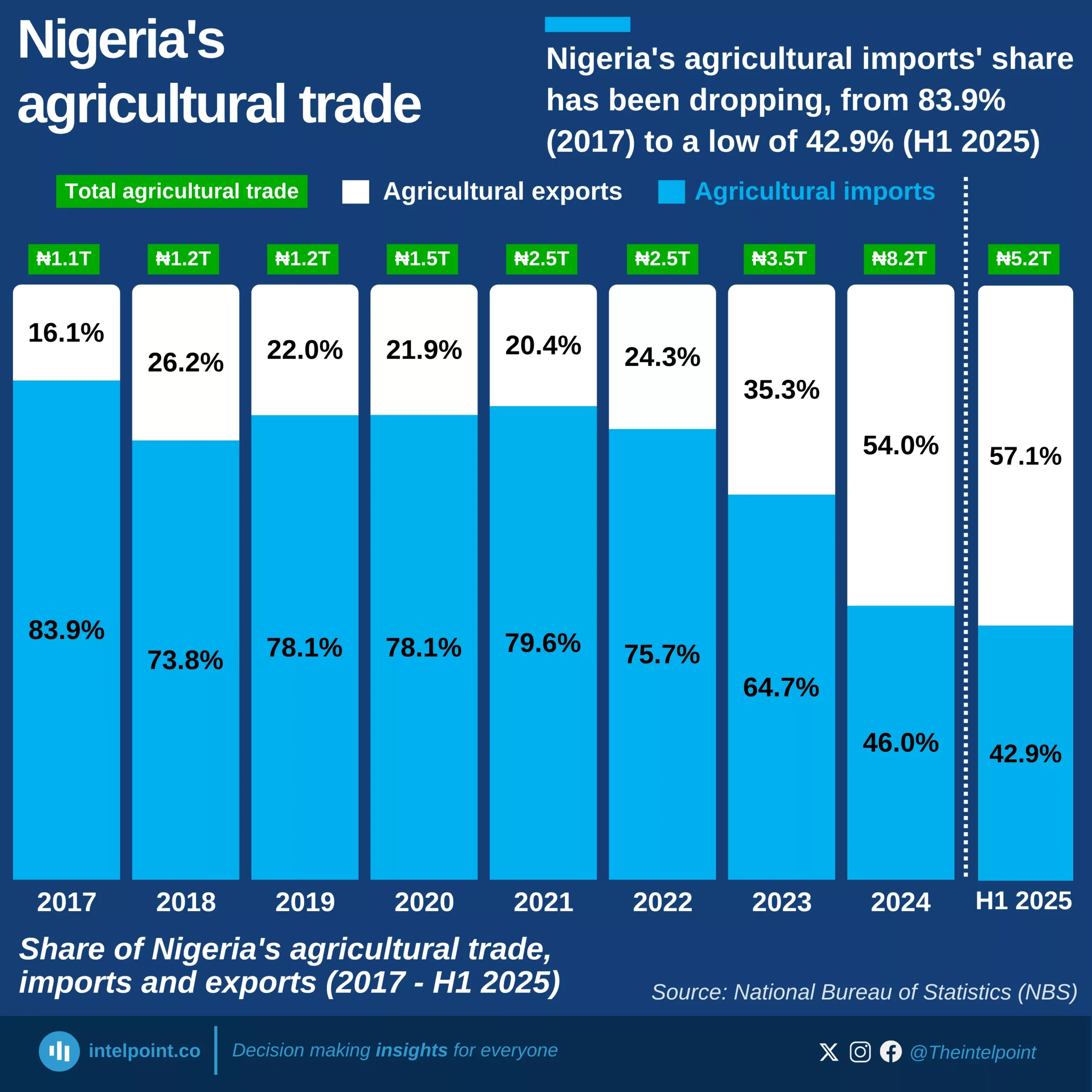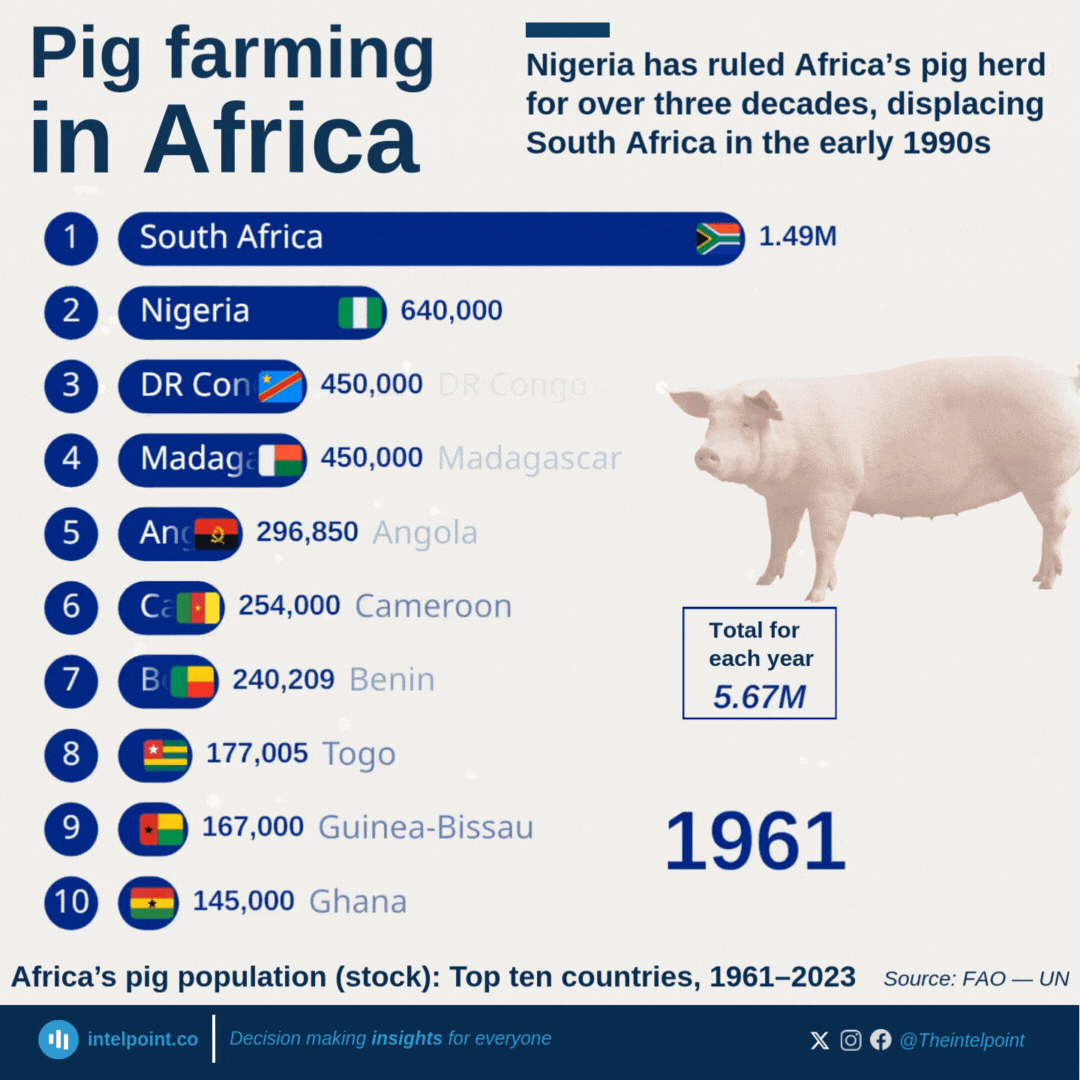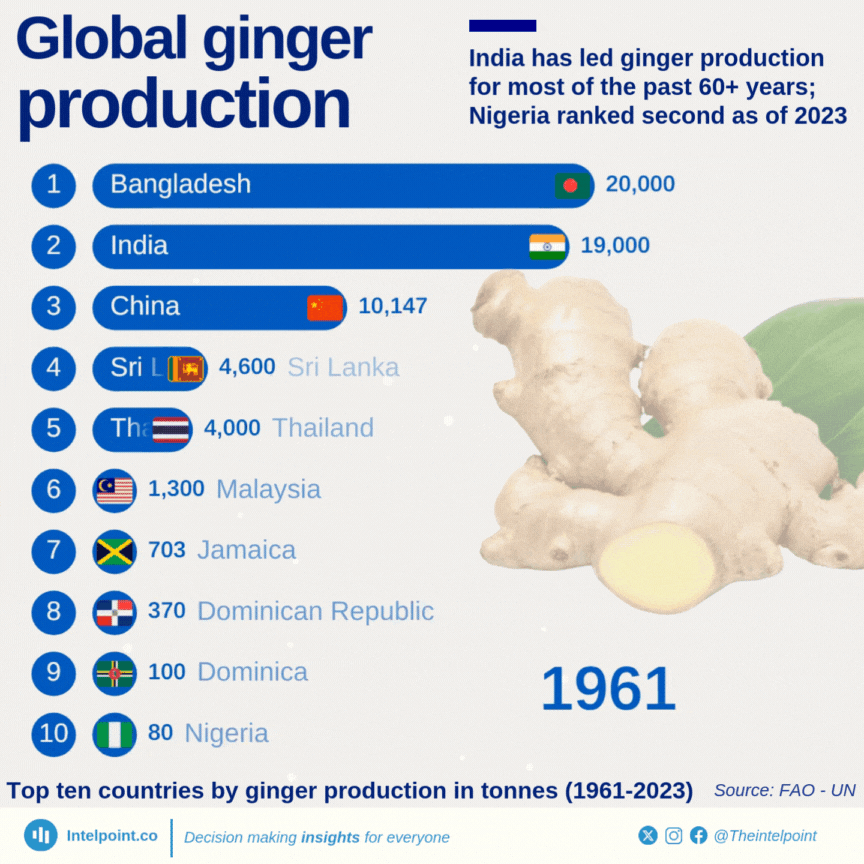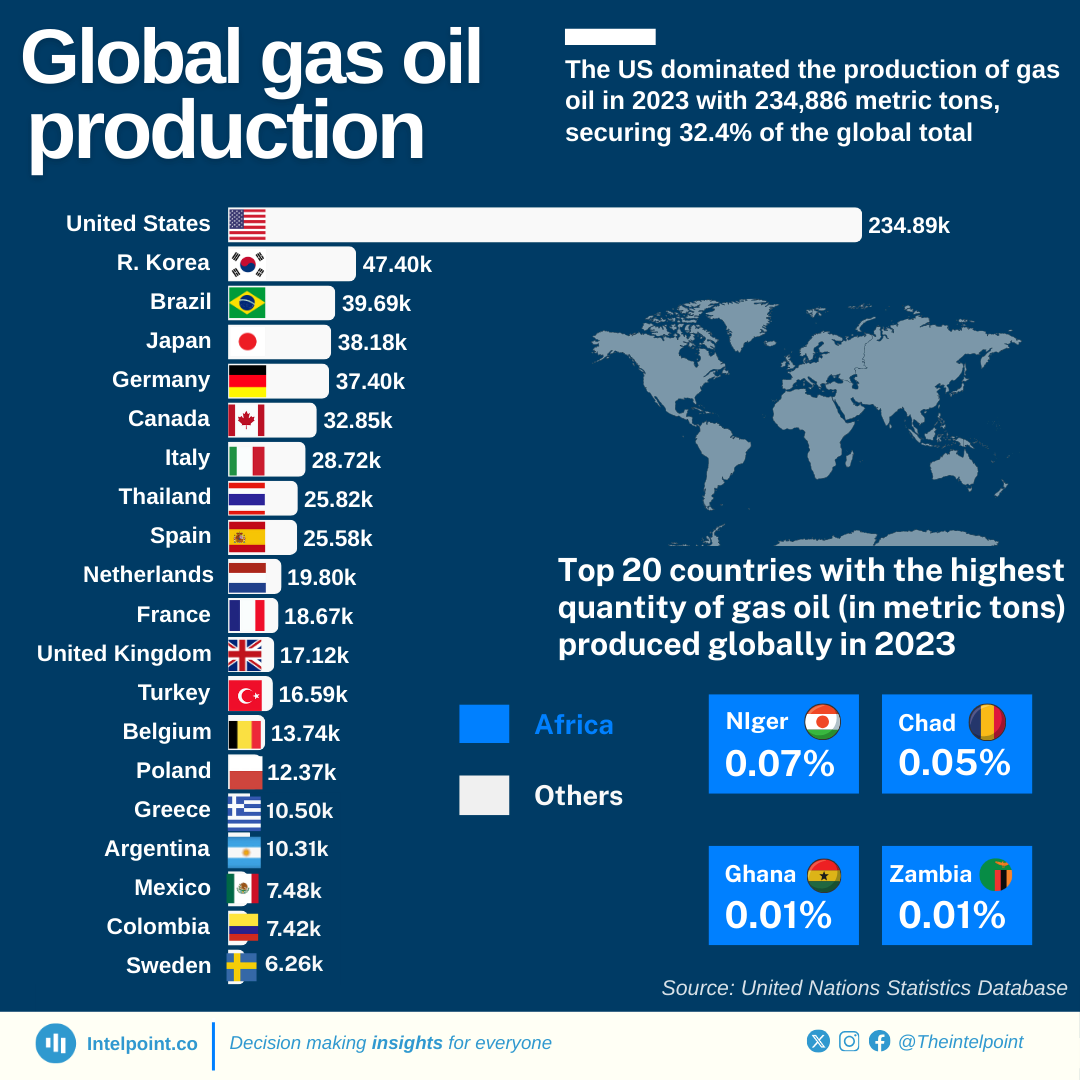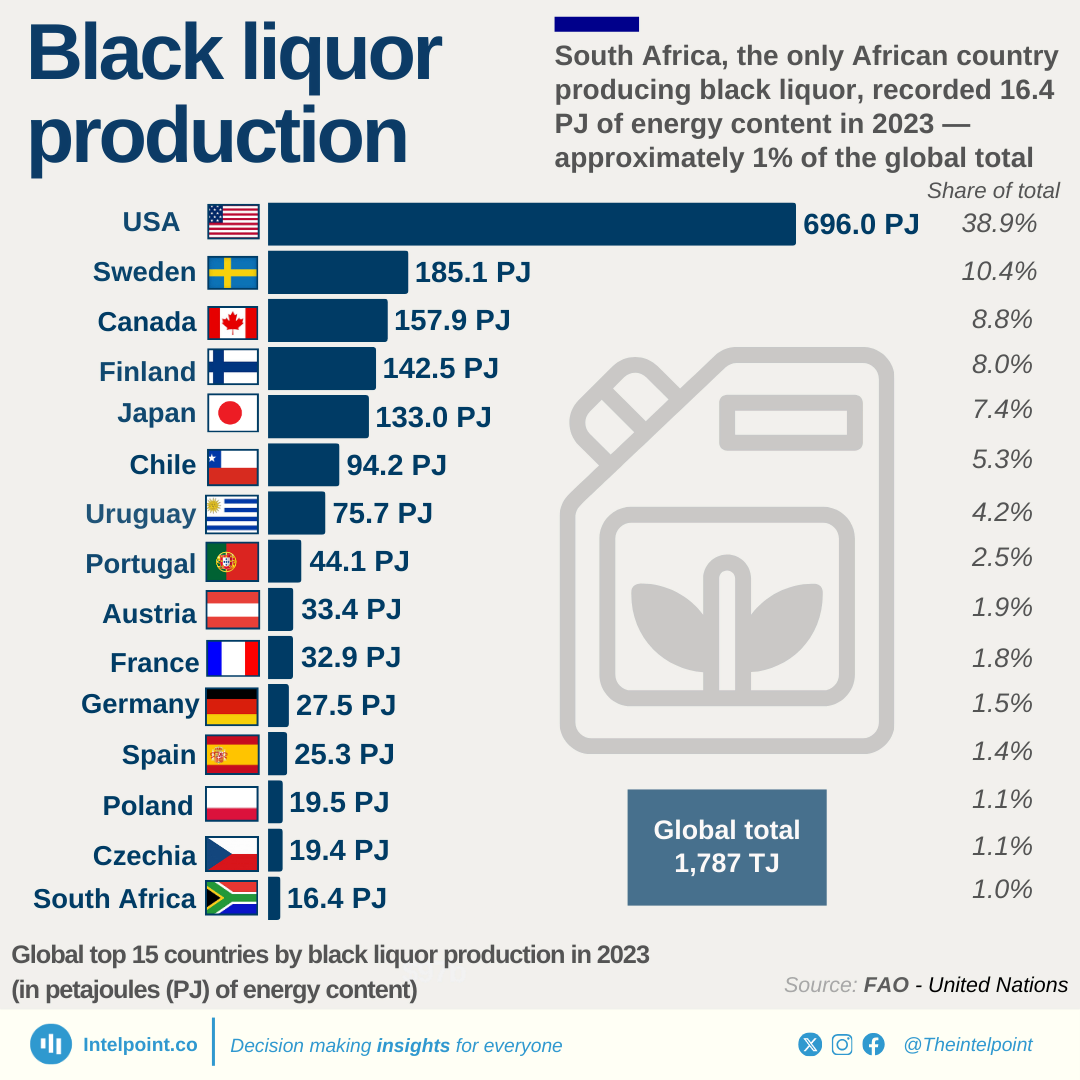Key Takeaways:
From 1961 to 2022, the African wine production landscape experienced notable shifts in leadership and output. Algeria was the continent's leading wine producer from 1961 until 1974. However, its production declined sharply after its independence, likely due to political changes, shrinking export markets, and evolving domestic demand.
In 1975, South Africa emerged as Africa’s top wine producer and maintained this position consistently through to 2022. This sustained leadership can be attributed to the country’s favourable climate and well-established wine regions, such as the Western Cape, which have supported large-scale production.
Meanwhile, North African countries like Morocco and Tunisia have continued to produce wine at relatively stable levels. Though their output is small compared to South Africa, they remain important contributors to the continent’s wine industry.
In recent decades, several Sub-Saharan African countries, including Tanzania, Kenya, and Zimbabwe have shown increasing interest in wine production, establishing modest but persistent industries.
